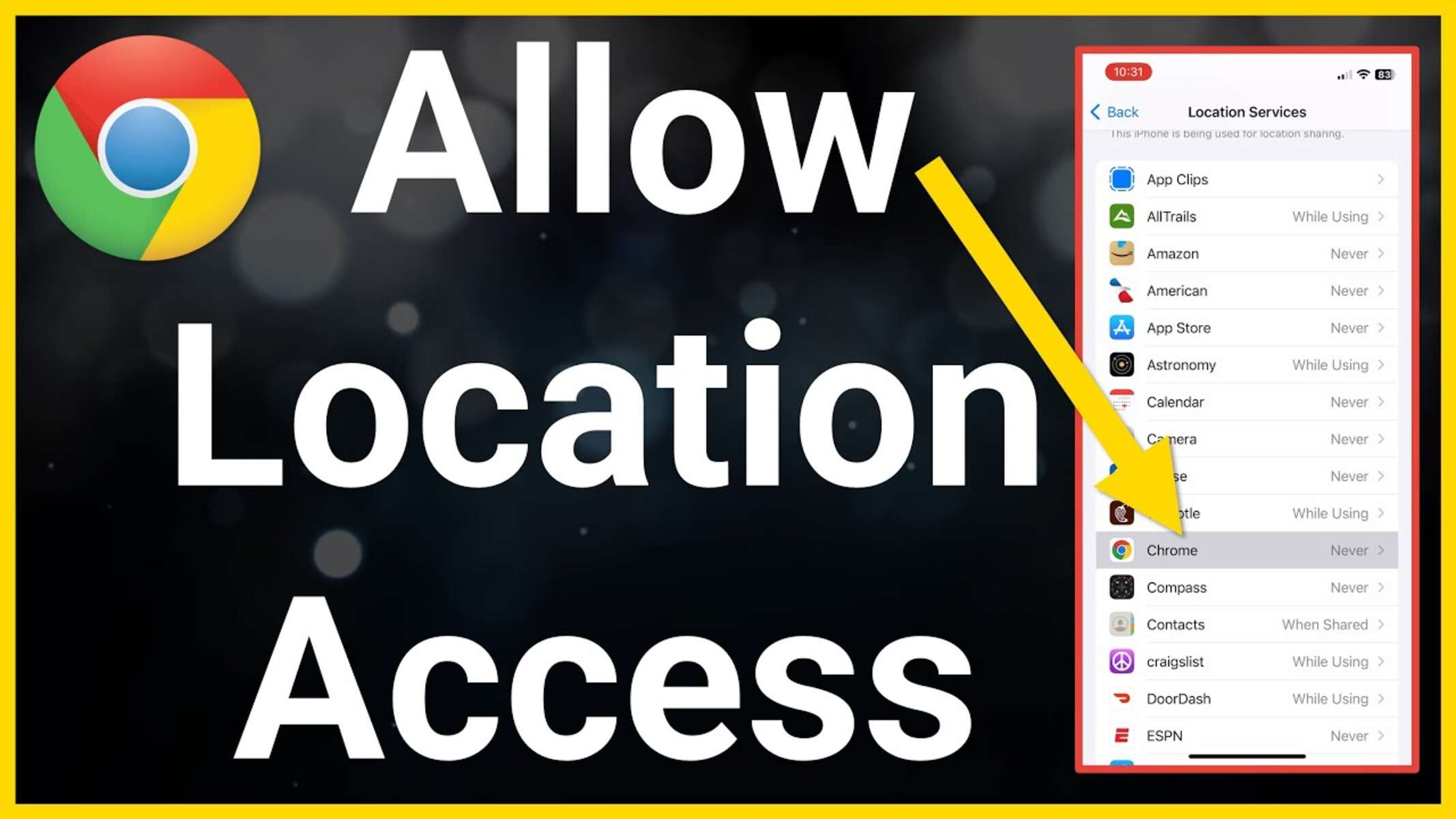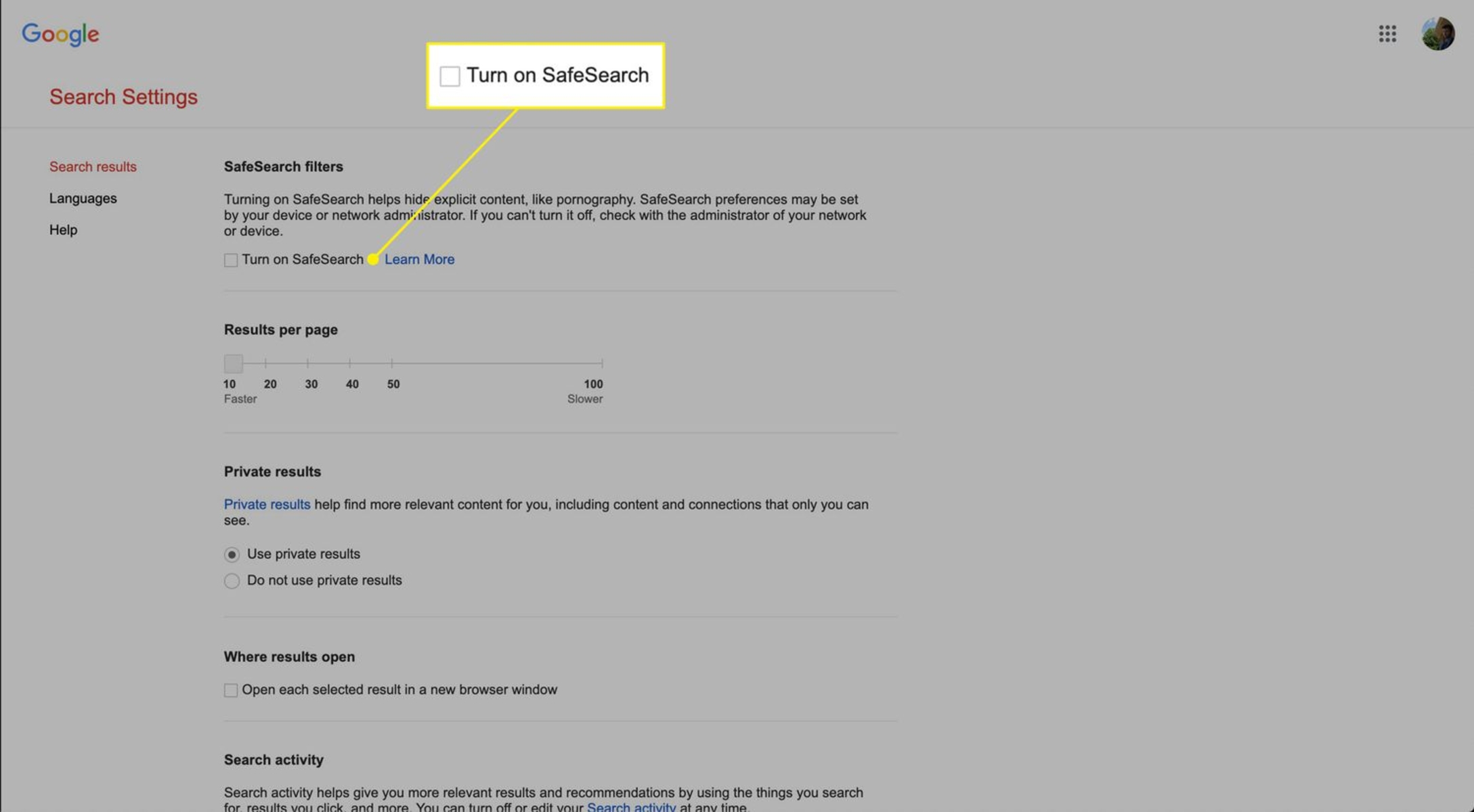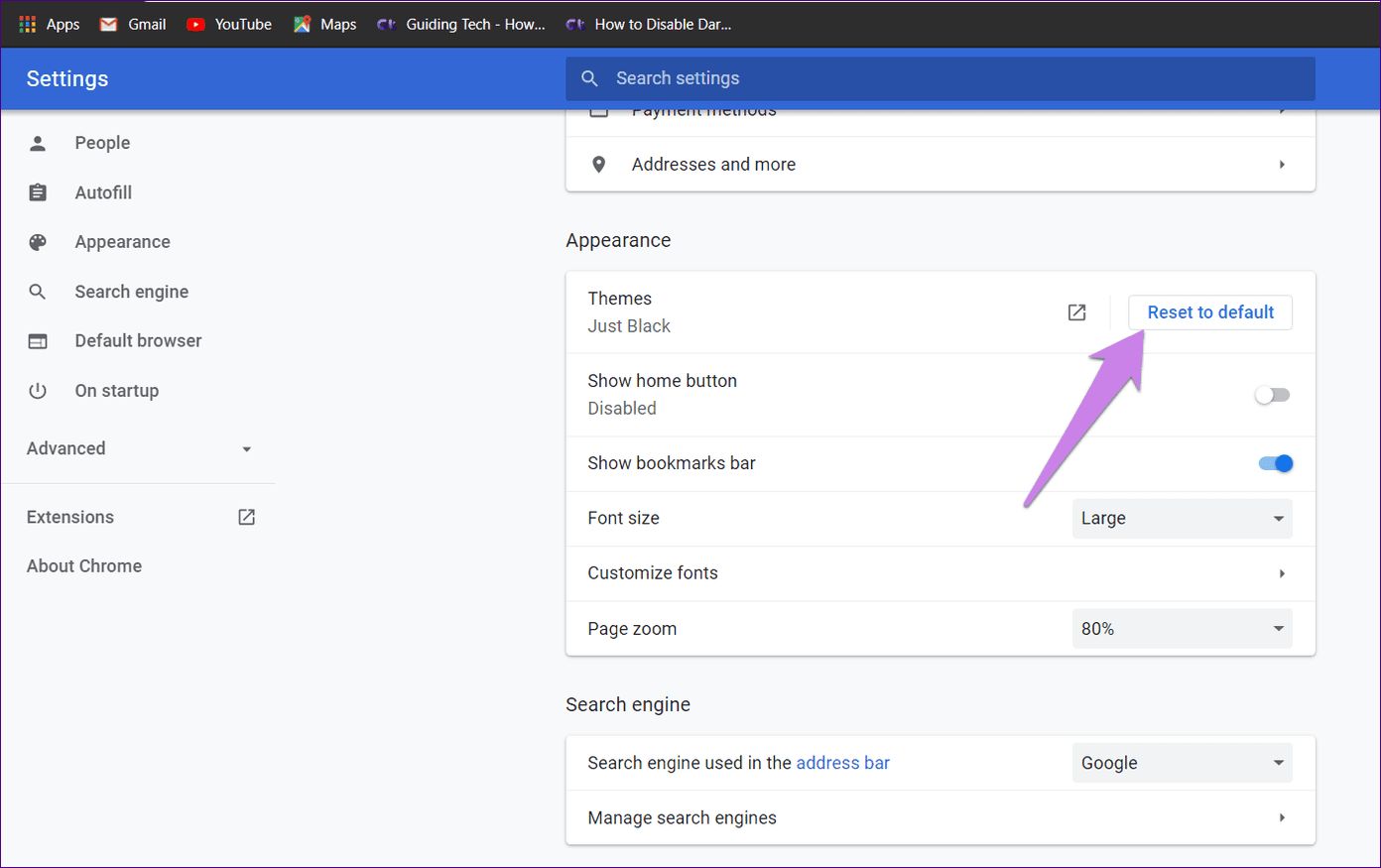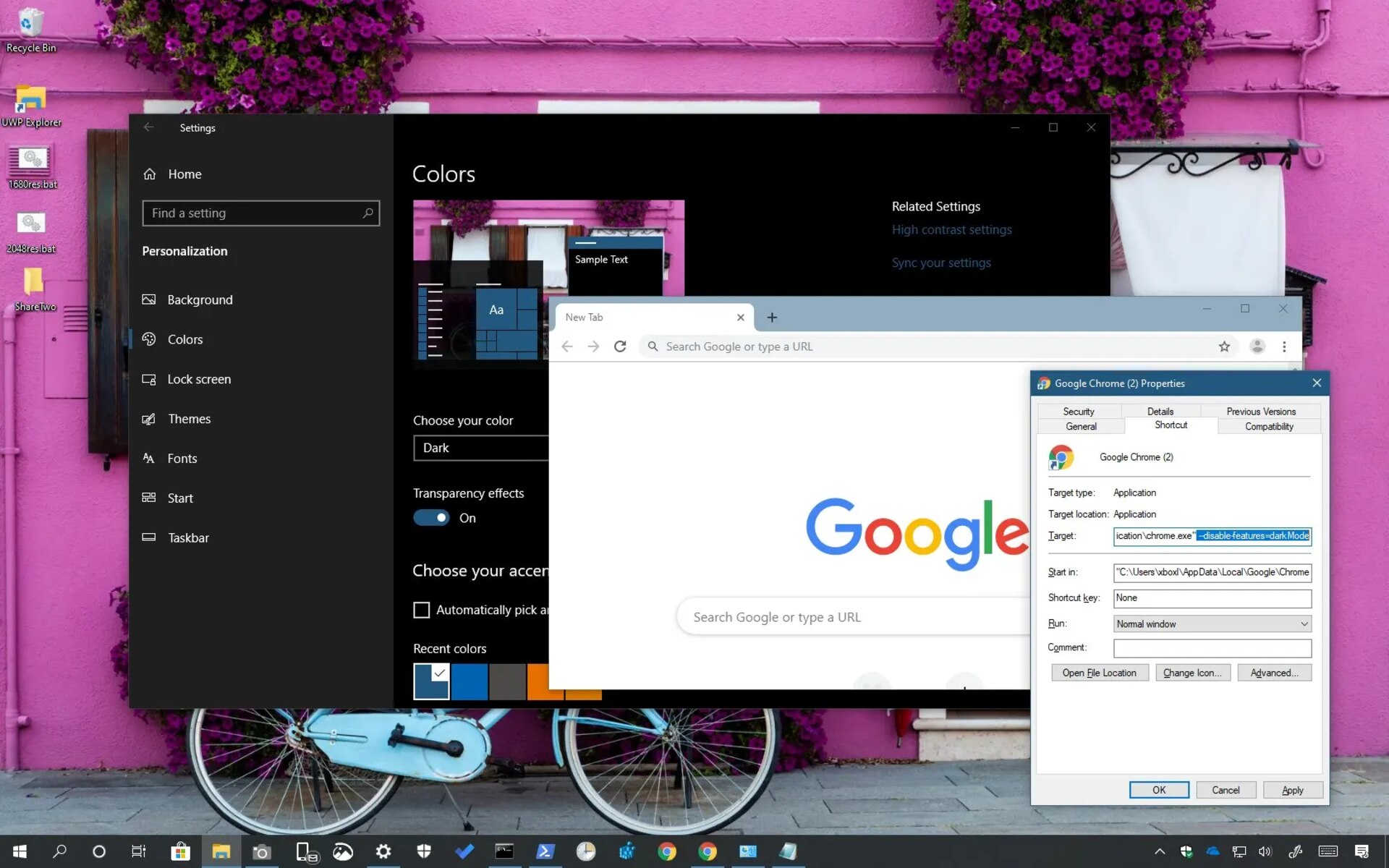Introduction
Google Chrome, one of the most popular web browsers globally, offers a plethora of features designed to enhance user experience. Among these features is the ability to access location-based services, which can greatly enrich the browsing experience. By enabling location services in Chrome, users can enjoy personalized content, relevant search results, and location-specific information. Whether you're looking for nearby restaurants, local weather updates, or mapping services, having location services enabled can significantly improve the accuracy and relevance of the information you receive.
In this guide, we will walk you through the simple steps to turn on location services in Chrome. Whether you're using Chrome on your desktop, laptop, or mobile device, the process is straightforward and can be completed in just a few clicks. Once you've enabled location services, you'll have the option to allow or block specific websites from accessing your location, giving you greater control over your privacy and security while browsing the web.
So, if you're ready to unlock the full potential of location-based services in Chrome, let's dive into the step-by-step process of turning on location access. Whether you're a frequent traveler, a local explorer, or simply someone who values personalized and relevant information, enabling location services in Chrome can open up a world of possibilities right at your fingertips. Let's get started!
Step 1: Open Chrome Settings
To begin the process of enabling location services in Chrome, the first step is to open the Chrome browser settings. This can be easily accomplished by clicking on the three-dot menu icon located in the top-right corner of the browser window. Upon clicking the icon, a drop-down menu will appear, presenting a range of options for customizing and managing your Chrome settings.
Once the drop-down menu is displayed, navigate your cursor to the "Settings" option and click on it. This action will redirect you to the Chrome settings page, where you can explore and modify various aspects of the browser's functionality. The settings page is designed to provide users with a centralized location for adjusting preferences, managing extensions, and accessing advanced configurations.
Upon reaching the settings page, you will encounter a user-friendly interface that is intuitively organized, making it easy to locate specific features and options. The left-hand sidebar presents a list of categories, including "Privacy and security," "Autofill," "Appearance," and more. This layout allows for seamless navigation and efficient access to the desired settings.
In addition to the sidebar categories, the settings page also incorporates a search bar at the top. This search functionality enables users to quickly locate specific settings or features by entering relevant keywords or phrases. Whether you're looking to adjust location settings, manage cookies, or customize your browsing experience, the search bar provides a convenient way to streamline the process.
Overall, opening Chrome settings serves as the gateway to a wealth of customization options, including the ability to manage location access. By familiarizing yourself with the layout and functionality of the settings page, you'll be well-equipped to proceed to the next steps in enabling location services and optimizing your browsing experience in Chrome.
In the next section, we will delve into the specific steps for accessing the "Site Settings" where location access can be enabled, setting the stage for a seamless and personalized browsing experience.
Step 2: Click on "Site Settings"
After accessing the Chrome settings, the next crucial step in enabling location services involves navigating to the "Site Settings" section. This is where you can manage permissions for individual websites, including granting or revoking access to your device's location. By customizing these settings, you can exercise greater control over your privacy and security while browsing the web.
To proceed, locate and click on the "Privacy and security" category in the left-hand sidebar of the Chrome settings page. This category encompasses a range of essential privacy and security features, including site permissions, cookies, and security protocols. Upon clicking on "Privacy and security," a submenu will expand, presenting additional options for managing site-specific settings.
Within the expanded submenu, you will find the "Site settings" option, which is the gateway to fine-tuning permissions for individual websites. Click on "Site settings" to access a comprehensive dashboard where you can configure various site permissions, including location access, camera access, microphone access, and more. This centralized hub empowers users to tailor their browsing experience based on their preferences and security considerations.
Upon entering the "Site settings" section, you will be presented with a list of permissions that can be managed on a per-site basis. These permissions cover a wide spectrum of access, ranging from notifications and pop-ups to device capabilities such as location and camera. By clicking on the "Location" option, you can view and modify the default setting for location access across all websites.
Furthermore, the "Site settings" page allows you to view a list of websites that have requested or been granted access to your location. This transparency enables you to review and adjust permissions for specific sites, ensuring that you maintain full control over which websites can utilize your device's location data.
In addition to managing location access, the "Site settings" section offers a comprehensive suite of controls for customizing your browsing experience. Whether you're concerned about privacy, security, or simply want to fine-tune your interaction with specific websites, this feature-rich dashboard provides the tools you need to navigate the web with confidence and peace of mind.
By clicking on "Site settings" and exploring the array of customizable permissions, you are taking a proactive step towards optimizing your browsing experience in Chrome. With the ability to manage location access and other site-specific permissions, you can tailor your interaction with websites to align with your preferences and priorities.
In the subsequent section, we will delve into the pivotal steps for turning on location access within the "Site settings" interface, empowering you to harness the full potential of location-based services in Chrome.
Step 3: Turn on Location Access
Within the "Site settings" section of Chrome, enabling location access is a straightforward process that empowers users to harness the full potential of location-based services. By turning on location access, you pave the way for personalized content, relevant search results, and location-specific information, enhancing your browsing experience in meaningful ways.
To initiate the process of turning on location access, navigate to the "Site settings" page within the Chrome settings. Once there, locate the "Location" option among the list of permissions that can be managed on a per-site basis. Clicking on the "Location" option will reveal the default setting for location access across all websites.
Upon accessing the "Location" settings, you will encounter a toggle switch that allows you to enable or disable location access. By default, location access may be turned off, requiring a simple click on the toggle switch to activate this feature. Once enabled, Chrome will be able to utilize your device's location data to provide personalized and relevant content based on your geographical context.
Enabling location access in Chrome opens the door to a myriad of benefits, including tailored search results, localized recommendations, and enhanced mapping services. Whether you're seeking nearby attractions, local weather updates, or location-specific information, having location access turned on can significantly enrich your browsing experience.
Furthermore, by enabling location access, you are positioning yourself to take advantage of the seamless integration of location-based services offered by various websites and web applications. From travel and navigation services to location-aware content delivery, the ability to access your device's location data can unlock a wealth of possibilities while browsing the web.
In addition to the immediate benefits of personalized content and relevant information, turning on location access in Chrome sets the stage for a more immersive and contextually aware browsing experience. As you explore websites and interact with location-based services, the utilization of your device's location data can enhance the accuracy and relevance of the content and services you encounter.
By following the simple steps to turn on location access within the "Site settings" interface, you are empowering Chrome to deliver a more tailored and personalized browsing experience. With location access enabled, you can tap into the full potential of location-based services, ensuring that the content and information you encounter are closely aligned with your geographical context and preferences.
In the subsequent section, we will delve into the nuanced process of allowing or blocking specific sites from accessing your location, providing you with granular control over your privacy and security while browsing the web.
Step 4: Allow or Block Specific Sites
Once you have enabled location access in Chrome, you gain the ability to exercise granular control over which specific websites can access your device's location data. This level of control empowers you to manage your privacy and security preferences while ensuring that location-based services are utilized in a manner that aligns with your needs and priorities.
To allow or block specific sites from accessing your location, navigate to the "Site settings" section within the Chrome settings. Once there, locate the "Location" option among the list of permissions that can be managed on a per-site basis. Clicking on the "Location" option will reveal the default setting for location access across all websites.
Within the "Location" settings, you will find a list of websites that have requested or been granted access to your location. This transparency enables you to review and adjust permissions for specific sites, ensuring that you maintain full control over which websites can utilize your device's location data.
To allow a specific site to access your location, simply click on the website from the list and adjust the permission setting to "Allow." This action grants the selected site permission to access your device's location data, enabling it to deliver personalized and relevant content based on your geographical context.
Conversely, if you wish to block a specific site from accessing your location, you can click on the website from the list and adjust the permission setting to "Block." By doing so, you effectively revoke the site's access to your device's location data, ensuring that it cannot utilize this information for location-based services.
The ability to allow or block specific sites from accessing your location provides a tailored approach to managing your privacy and security while browsing the web. Whether you want to grant location access to trusted websites or restrict it for certain sites, Chrome's flexible permissions framework empowers you to curate your browsing experience according to your preferences.
By leveraging the granular control offered within the "Site settings" interface, you can confidently navigate the web, knowing that your location data is being utilized in a manner that aligns with your privacy and security considerations. This level of control ensures that you can enjoy the benefits of location-based services while maintaining a proactive stance in safeguarding your personal information.
In the next section, we will summarize the key steps involved in enabling location access in Chrome and provide a comprehensive overview of the benefits that come with harnessing the full potential of location-based services.
Conclusion
In conclusion, the process of turning on location access in Google Chrome is a pivotal step towards unlocking the full potential of location-based services while browsing the web. By following the simple and intuitive steps outlined in this guide, users can seamlessly enable location access, granting Chrome the ability to utilize their device's location data for personalized and relevant content delivery.
Upon accessing the Chrome settings and navigating to the "Site settings" section, users can fine-tune their location access preferences, allowing for a tailored browsing experience that aligns with their privacy and security considerations. The ability to manage permissions for individual websites empowers users to exercise granular control over which sites can access their location data, ensuring that their browsing experience is personalized and secure.
Enabling location access in Chrome opens the door to a myriad of benefits, including tailored search results, localized recommendations, and enhanced mapping services. Whether users are seeking nearby attractions, local weather updates, or location-specific information, having location access turned on can significantly enrich their browsing experience.
Furthermore, the seamless integration of location-based services offered by various websites and web applications becomes readily accessible once location access is enabled. From travel and navigation services to location-aware content delivery, the utilization of device location data can unlock a wealth of possibilities while browsing the web.
By allowing or blocking specific sites from accessing their location, users can curate their browsing experience according to their preferences, ensuring that their location data is utilized in a manner that aligns with their privacy and security considerations. This level of control provides peace of mind, allowing users to enjoy the benefits of location-based services while maintaining proactive measures to safeguard their personal information.
In essence, the process of turning on location access in Chrome represents a proactive step towards embracing personalized and relevant content delivery, enhancing the browsing experience, and exercising control over privacy and security preferences. By leveraging the intuitive features and controls within Chrome's settings, users can navigate the web with confidence, knowing that their location data is being utilized in a manner that aligns with their preferences and priorities.

























